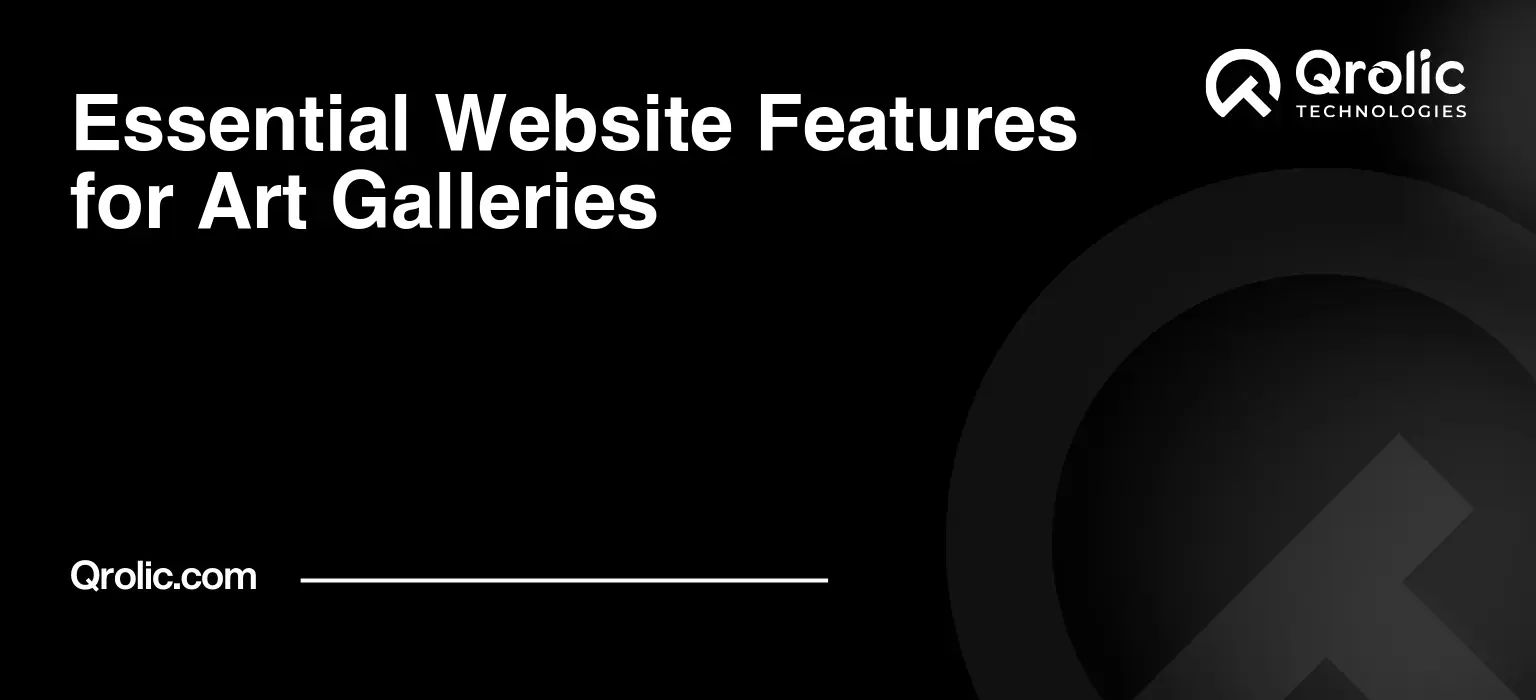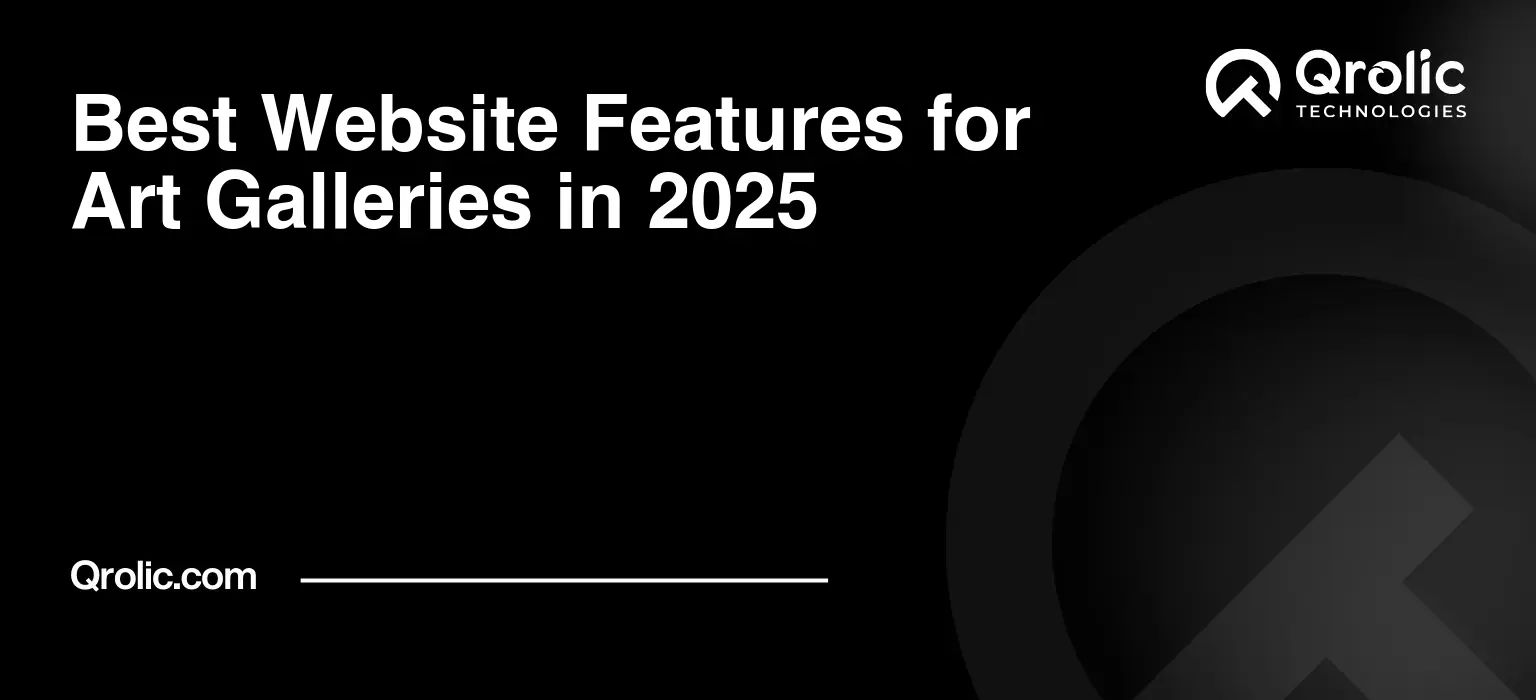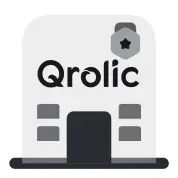The digital landscape has become as vital to the art world as the physical gallery space. For art galleries, a website isn’t just a nice-to-have—it’s an essential tool for showcasing artists, attracting collectors, and fostering a global community. But navigating the world of website creation can feel daunting. Which platform offers the best balance of visual appeal, functionality, and ease of use? That’s where we come in. This comprehensive guide will unveil the top 10 website creators tailor-made for art galleries, helping you choose the perfect platform to amplify your online presence.
Quick Summary:
- Websites are vital for global reach and sales.
- Look for strong visuals, e-commerce, and easy use.
- Choose from top platforms based on your gallery’s needs.
- Optimize your site for search engines (SEO).
Table of Contents
- Why a Strong Website is Crucial for Your Art Gallery
- Key Features to Look For in a Website Creator for Art Galleries
- Visual Appeal and Design
- Functionality
- User-Friendliness and Support
- Top 10 Website Creators for Art Galleries: A Detailed Breakdown
- 1. Squarespace
- 2. Wix
- 3. Shopify
- 4. WordPress.org (Self-Hosted)
- 5. Weebly
- 6. Format
- 7. Artlogic
- 8. Cargo Collective
- 9. Adobe Portfolio
- 10. Big Cartel
- How to Choose the Right Website Creator
- Optimizing Your Art Gallery Website for SEO
- Qrolic Technologies: Your Partner in Digital Transformation
- Conclusion
Why a Strong Website is Crucial for Your Art Gallery
Before we dive into the specifics, let’s understand why an effective website is paramount for modern art galleries. In today’s digital age, a website functions as your virtual storefront, accessible 24/7 to potential clients worldwide. Here’s why it matters:
- Global Reach: Break free from geographical limitations. A website allows you to connect with collectors and art enthusiasts from any corner of the globe.
- Brand Building: Establish your gallery’s unique identity. A well-designed website showcases your style, values, and the artists you represent.
- Showcasing Artwork: Display high-quality images and videos of your art pieces. This provides a richer viewing experience than a simple online listing.
- Facilitating Sales: Enable online purchases. Integrate e-commerce functionalities to make it easy for clients to buy pieces they love.
- Building Relationships: Connect with your audience through newsletters, blog posts, and event calendars. Cultivate a loyal following and engage your community.
- Improved Discoverability: Enhance your gallery’s online visibility. A well-optimized website improves your search engine ranking, making it easier for people to find you.
- Professionalism: A well-crafted website projects professionalism and credibility, assuring clients that your gallery is a reliable and reputable source of art.
- Data Collection: Gain valuable insights into your audience’s preferences and behaviors. This data allows for better marketing strategies and improved gallery operations.
Key Features to Look For in a Website Creator for Art Galleries
Choosing the right website creator can be a game-changer. Here are the essential features to consider:
Visual Appeal and Design
- High-Resolution Image Support: The ability to display large, crisp images is critical. Art needs to be shown in all its glory.
- Customizable Templates: Select a creator that allows for customization of templates to match your gallery’s aesthetic.
- Clean, Minimalist Design Options: Avoid clutter. A clean layout will allow the art to take center stage.
- Mobile Responsiveness: Ensure your website looks great on all devices, from desktops to smartphones.
Functionality
- E-commerce Integration: Secure and user-friendly online payment options are a must.
- Content Management System (CMS): A user-friendly CMS will allow you to easily update and manage your content.
- Blog Integration: A blog allows you to post updates, artist interviews, and behind-the-scenes stories.
- Event Calendars: Showcase upcoming exhibitions, openings, and special events.
- Contact Forms and Customer Support: Enable visitors to easily reach out to your gallery.
- Search Functionality: Allow users to quickly search for specific artists, artworks, or content.
- SEO Optimization Tools: Built-in SEO features help boost your website’s visibility on search engines.
- Password-Protected Content: Offer exclusive access to specific collections for select clients.
- Integration with Social Media: Seamlessly connect your website to your social media platforms.
User-Friendliness and Support
- Intuitive Interface: The website creator should be easy to learn and use, even for those with minimal tech skills.
- Helpful Customer Support: Reliable and responsive support can be a lifesaver when you encounter technical issues.
- Video Tutorials and Documentation: Access to resources that help you navigate the platform.
- Speed and Reliability: The platform should offer fast load times and stable performance.
- Scalability: Choose a platform that can grow with your gallery as it expands.
Top 10 Website Creators for Art Galleries: A Detailed Breakdown
Now, let’s explore the top 10 website creators that meet the needs of art galleries:
1. Squarespace
Squarespace is known for its beautiful templates and ease of use, making it an excellent choice for art galleries looking to create a visually appealing and professional website.
- Pros:
- Stunning, modern design templates that are perfect for showcasing art.
- Excellent image handling and display capabilities.
- Intuitive drag-and-drop interface.
- Built-in e-commerce functionality.
- Robust SEO tools.
- 24/7 customer support.
- Cons:
- Can be more expensive than some other options.
- Less flexibility for advanced customizations.
- Best for: Galleries that prioritize sleek design and ease of use.
- Features: Image galleries, e-commerce store, blogging platform, email marketing, SEO tools, member areas.
Example Strategy: Use Squarespace’s grid layouts to display your artworks in a visually consistent manner. Utilize their built-in blogging platform to create artist interviews and promote upcoming exhibitions.
2. Wix
Wix is a highly customizable platform that offers a wide range of features, suitable for galleries looking for flexibility and creativity in their online presence.
- Pros:
- Extensive template library with options for art-focused websites.
- Highly flexible drag-and-drop editor.
- App market with a variety of add-ons.
- Built-in SEO tools.
- E-commerce functionalities.
- Competitive pricing options.
- Cons:
- Can sometimes be overwhelming for beginners.
- Template changes require significant restructuring of your website.
- Best for: Galleries seeking extensive customization options and an abundance of features.
- Features: Drag-and-drop editor, app market, e-commerce, blogging, SEO tools, online bookings, email marketing.
Example Strategy: Utilize Wix’s app market to add specific features like customer chat or event management systems. Customize a template to reflect your gallery’s unique brand through custom fonts and color palettes.
3. Shopify
Shopify is a leading e-commerce platform, making it ideal for galleries that prioritize online sales.
- Pros:
- Powerful e-commerce features.
- Wide range of integrations with payment gateways and shipping providers.
- Extensive app store with additional functionalities.
- Robust analytics and reporting.
- Excellent for managing inventory and processing orders.
- Cons:
- Can be more complex to set up than simpler platforms.
- Primarily focuses on e-commerce, so it might require additional apps for content management.
- Best for: Galleries that are serious about selling art online.
- Features: E-commerce platform, multiple payment options, inventory management, shipping integrations, discount codes, customer accounts.
Example Strategy: Set up detailed product listings with multiple high-resolution images of each artwork, along with its dimensions, medium, and artist’s bio. Use Shopify’s marketing features to run promotions and attract online buyers.
4. WordPress.org (Self-Hosted)
WordPress.org is a powerful open-source platform offering maximum flexibility and customization, perfect for galleries needing a bespoke online presence. Requires website hosting and setup.
- Pros:
- Highly customizable with thousands of themes and plugins.
- Full control over your website.
- Scalable and flexible for long-term growth.
- Extensive community support.
- Cost-effective once hosting and setup are handled.
- Cons:
- Requires technical skills or a developer to set up and maintain.
- Requires more effort to manage security and updates.
- Best for: Galleries that have a team with technical skills or are willing to hire a developer for website development.
- Features: Open-source flexibility, extensive plugin library, complete control, scalable, customizable design, SEO optimization plugins, e-commerce integrations.
Example Strategy: Use premium themes designed specifically for art portfolios, and add e-commerce plugins like WooCommerce for sales. Employ SEO plugins like Yoast SEO to optimize your content for search engines.
5. Weebly
Weebly is a user-friendly platform, known for its ease of use, making it great for galleries that need a simple, straightforward website quickly.
- Pros:
- Extremely easy to use with a drag-and-drop interface.
- Affordable pricing plans.
- Suitable for smaller galleries or solo artists.
- E-commerce capabilities included in some plans.
- Reliable uptime.
- Cons:
- Less customizable than platforms like WordPress or Wix.
- Fewer advanced features.
- Limited app integrations.
- Best for: Galleries that need a simple, affordable, and user-friendly website.
- Features: Drag-and-drop editor, e-commerce options, built-in SEO, blogging, appointment scheduling.
Example Strategy: Utilize Weebly’s pre-designed sections to quickly set up galleries of your artwork, then use their blogging tool to share news about your exhibitions and artists.
6. Format
Format is specifically designed for creative professionals, offering a portfolio-focused approach that caters well to the needs of art galleries.
- Pros:
- Specifically designed for showcasing artwork.
- High-quality image display options.
- Simple and uncluttered templates.
- Built-in e-commerce.
- Easy client proofing and feedback.
- Cons:
- Fewer advanced customization options.
- Less versatile if you need more than just portfolio features.
- Higher price point.
- Best for: Galleries that require a professional portfolio-style website for showcasing art.
- Features: Portfolio display, image protection, e-commerce integrations, client proofing, custom branding, client management.
Example Strategy: Use Format’s grid and masonry layouts to display a large number of artworks in a visually pleasing way, and use its client proofing tool to share new pieces with key collectors.
7. Artlogic
Artlogic is a specialized platform designed specifically for the art world, offering a suite of tools tailored for galleries, including inventory management and CRM.
- Pros:
- Tailored features for galleries including inventory, CRM, and invoicing.
- Integrated online sales platform.
- Comprehensive art management tools.
- Excellent for managing complex art businesses.
- High-end design and professional feel.
- Cons:
- Can be quite expensive.
- Steeper learning curve due to its comprehensive feature set.
- Not as flexible for general website design.
- Best for: Larger, established galleries with complex operational needs.
- Features: Inventory management, CRM, online sales, invoicing, exhibition management, reporting.
Example Strategy: Manage your complete art inventory and connect each piece to your online display, making it seamless for clients to browse your offerings and make purchases. Utilize its CRM tool to track client preferences and communicate with them directly.
8. Cargo Collective
Cargo Collective is a minimalist platform for creatives, known for its clean and customizable designs, perfect for galleries focusing on art and design.
- Pros:
- Modern and customizable templates.
- Minimalist aesthetic that puts the focus on your work.
- Ideal for showcasing visual content.
- Affordable pricing.
- Creative and flexible design options.
- Cons:
- Not as intuitive as some other platforms.
- Requires a bit more design know-how.
- Fewer ready-made integrations and features.
- Best for: Galleries that prioritize minimalist design and have a strong design vision.
- Features: Customizable design, grid layouts, embeddable content, portfolio options, password-protected pages.
Example Strategy: Create custom galleries using Cargo’s unique design tools, and embed video and other media content to enhance the presentation of your exhibitions.
9. Adobe Portfolio
Adobe Portfolio is a simple, streamlined platform integrated with Adobe Creative Cloud, making it a great choice for galleries already using Adobe products.
- Pros:
- Easy integration with Adobe Creative Cloud apps.
- Sleek, minimalist design templates.
- Simple to use, particularly for Adobe users.
- Mobile-responsive layouts.
- Included with Adobe Creative Cloud subscriptions.
- Cons:
- Limited customization options compared to some competitors.
- Basic features with fewer e-commerce and marketing capabilities.
- Best for Adobe users; less appealing if you are not in the ecosystem.
- Best for: Galleries that already subscribe to Adobe Creative Cloud and need a straightforward portfolio website.
- Features: Adobe Creative Cloud integration, portfolio display, minimalist design, grid layouts, custom domain.
Example Strategy: Seamlessly import images from Lightroom or Photoshop, and use Adobe Portfolio’s simple interface to create galleries and share information about your artists.
10. Big Cartel
Big Cartel is a straightforward e-commerce platform designed for artists and small businesses, well-suited for galleries looking for a simple way to sell art online.
- Pros:
- Simple and intuitive platform focused on selling art.
- Affordable pricing plans, especially for smaller galleries.
- Easy-to-use interface for managing products.
- Built-in shipping tools and payment options.
- Good for small-scale online stores.
- Cons:
- Limited features compared to more robust e-commerce platforms.
- Fewer customization options.
- Not ideal for galleries with a large inventory.
- Best for: Smaller galleries that need a simple, affordable way to sell art online.
- Features: E-commerce platform, product listing, payment processing, shipping tools, inventory management.
Example Strategy: List your artworks with clear descriptions and pricing, utilize Big Cartel’s integrated tools to manage orders and shipping, and keep your product listings concise and focused.
How to Choose the Right Website Creator
Selecting the perfect website creator involves carefully considering your gallery’s needs and priorities. Here’s a step-by-step approach to make the best choice:
- Define Your Goals: What do you want your website to achieve? Are you focused on selling art online, building brand awareness, or sharing information about artists?
- Assess Your Budget: How much are you willing to spend on website creation and maintenance? Consider the cost of hosting, themes, plugins, and transaction fees.
- Consider Your Technical Skills: Are you comfortable with coding and complex settings, or do you prefer a user-friendly drag-and-drop interface?
- Evaluate Your Design Needs: Do you need a highly customizable design, or are you happy with pre-made templates?
- Prioritize Functionality: Which features are essential for your gallery? E-commerce capabilities, blog integrations, and specific management tools?
- Read Reviews and Testimonials: See what other users say about their experience with each platform.
- Take Advantage of Free Trials: Sign up for free trials to test the platforms yourself and see which one feels right.
- Consider Scalability: Will the platform meet your needs as your gallery grows? Choose one that can scale with your business.
- Don’t Be Afraid to Ask for Help: Many platforms offer support resources and communities to assist you.
- Make a Decision and Start Building: Once you’ve evaluated all factors, make a choice and commit to building your perfect online presence.
Optimizing Your Art Gallery Website for SEO
Having a great website is only half the battle—it also needs to be visible to potential clients. Search Engine Optimization (SEO) plays a crucial role in making your website discoverable. Here are key SEO strategies for your art gallery website:
- Keyword Research: Identify relevant keywords that people use to search for art galleries and artists, like "contemporary art gallery," "modern art," or specific artist names. Integrate these keywords naturally within your website’s content.
- On-Page Optimization: Optimize each page of your website, including page titles, meta descriptions, and headings. Use your keywords throughout your content.
- High-Quality Content: Create informative, engaging, and original content, such as artist biographies, exhibition previews, and blog posts related to art and culture.
- Image Optimization: Compress your image files to ensure fast load times, and use descriptive alt tags for all your images.
- Mobile Optimization: Make sure your website is fully responsive and optimized for mobile devices.
- Fast Loading Speed: Optimize your site for fast load times, as slow websites impact your ranking.
- Internal and External Linking: Link to other relevant content on your website, and get links from other art-related websites to increase domain authority.
- Local SEO: Optimize your Google My Business listing to ensure local clients can find your physical location as well.
- Regular Updates: Keep your website fresh by regularly updating your content and adding new exhibitions and artists.
Qrolic Technologies: Your Partner in Digital Transformation
While choosing the right platform is essential, having a reliable tech partner can take your art gallery’s online presence to the next level. That’s where Qrolic Technologies (https://qrolic.com/) comes in.
Qrolic Technologies is a dynamic technology company that specializes in providing innovative digital solutions for businesses. With a range of services tailored to meet diverse needs, Qrolic is adept at handling the digital complexities of art galleries, ensuring that their online presence is not only functional but also impactful. Here’s how Qrolic Technologies can help:
- Custom Website Development: If you need a highly bespoke website that perfectly reflects your gallery’s brand and vision, Qrolic can design and develop a site from the ground up.
- E-commerce Integration: Qrolic can integrate robust e-commerce functionalities into your website, making online sales seamless and secure.
- SEO Optimization: They’ll ensure your website is optimized for search engines, improving your online visibility and attracting more visitors.
- Digital Marketing Strategies: Qrolic can implement digital marketing strategies to increase awareness of your gallery and drive traffic to your website.
- Website Maintenance and Support: They’ll provide ongoing maintenance and support to keep your website running smoothly and efficiently.
- Custom Software Development: For specific needs like inventory management or CRM, they can develop custom software tailored to your requirements.
- Mobile Application Development: Qrolic can develop a mobile app for your art gallery, providing your clients with an even more convenient way to access your content and engage with your brand.
- Consulting Services: Their expert team can offer insights and advice on the best digital strategies to achieve your gallery’s specific goals.
By partnering with Qrolic Technologies, you gain access to expertise that goes beyond standard website design, offering a full spectrum of technological support to ensure that your art gallery not only thrives online but leads in the digital space.
Conclusion
Creating an exceptional online presence is no longer optional for art galleries; it’s essential for growth and sustainability. The right website creator can serve as a powerful tool for showcasing artists, attracting collectors, and building a thriving digital community. By understanding your specific needs, prioritizing key features, and leveraging the power of SEO, you can create a website that not only looks stunning but also drives real results. Remember to consider partnering with a technology expert like Qrolic Technologies to maximize your online potential. This comprehensive guide equips you with the knowledge and tools to choose the best website creator for your art gallery and helps you step confidently into the digital future of art.









